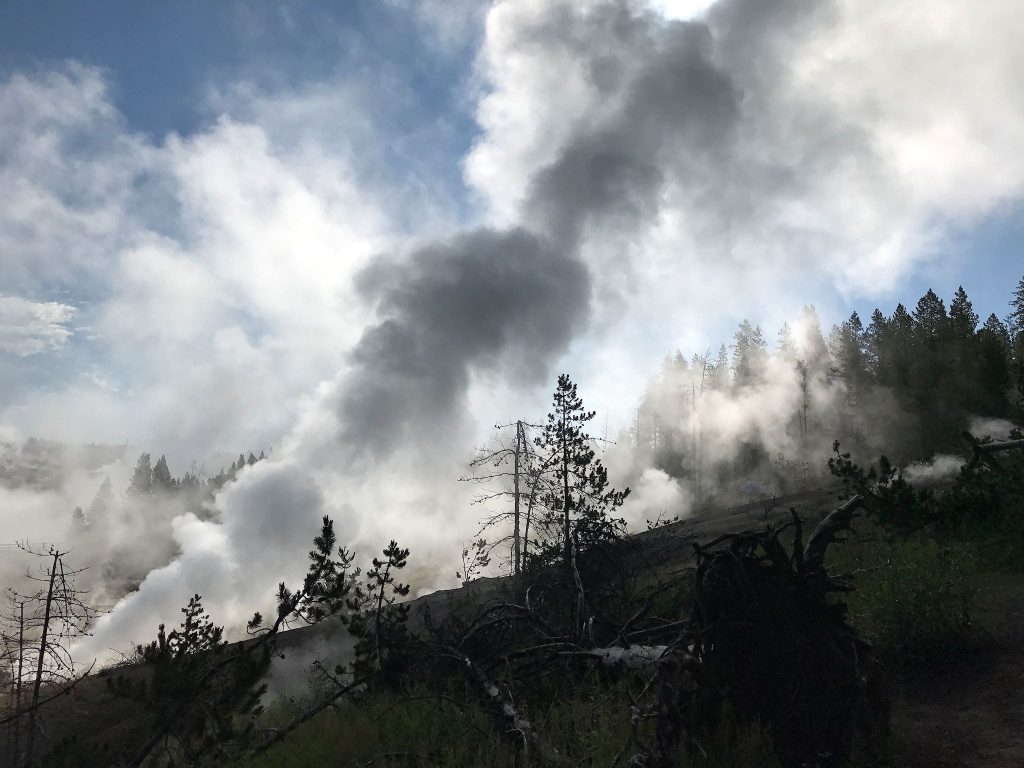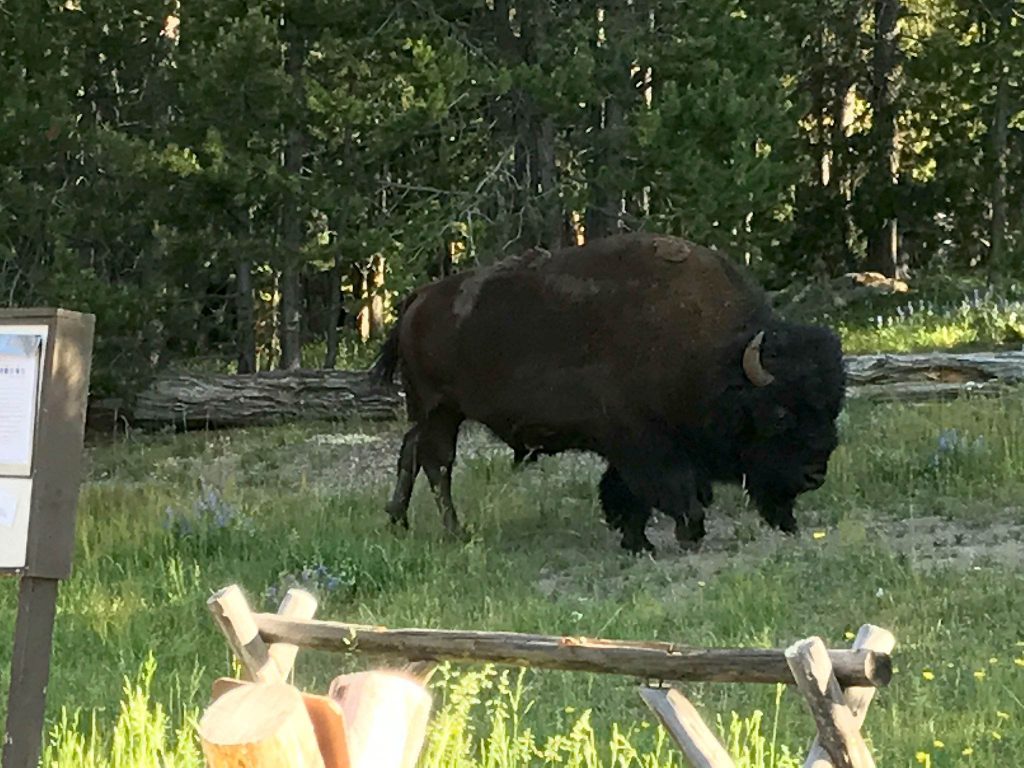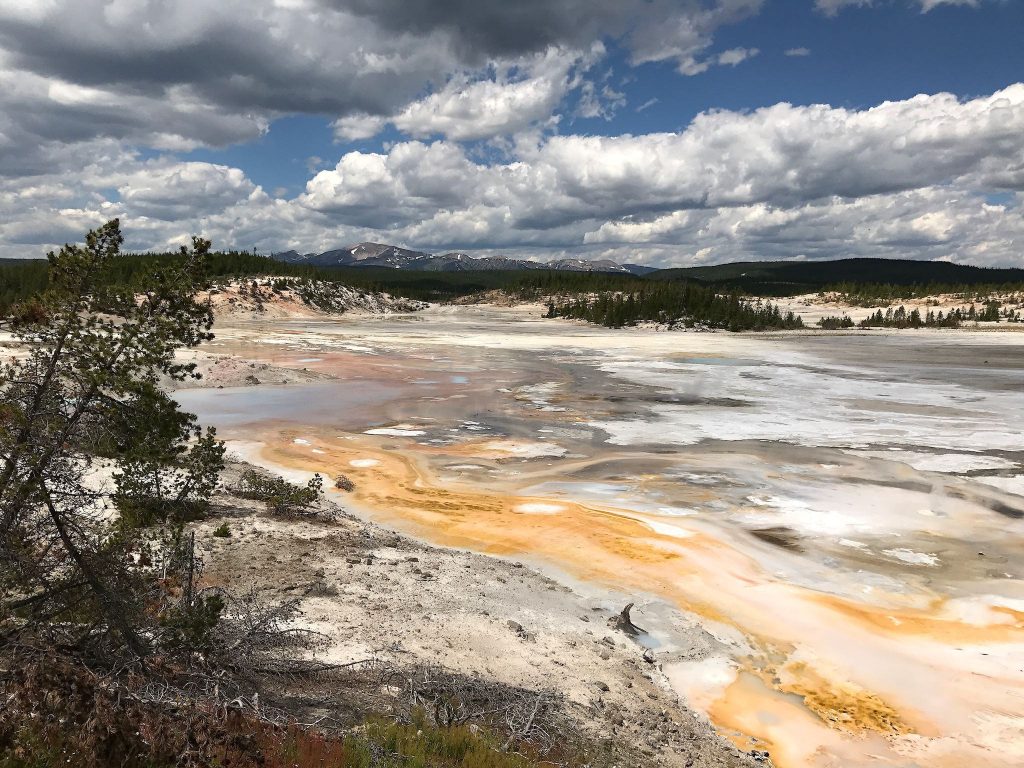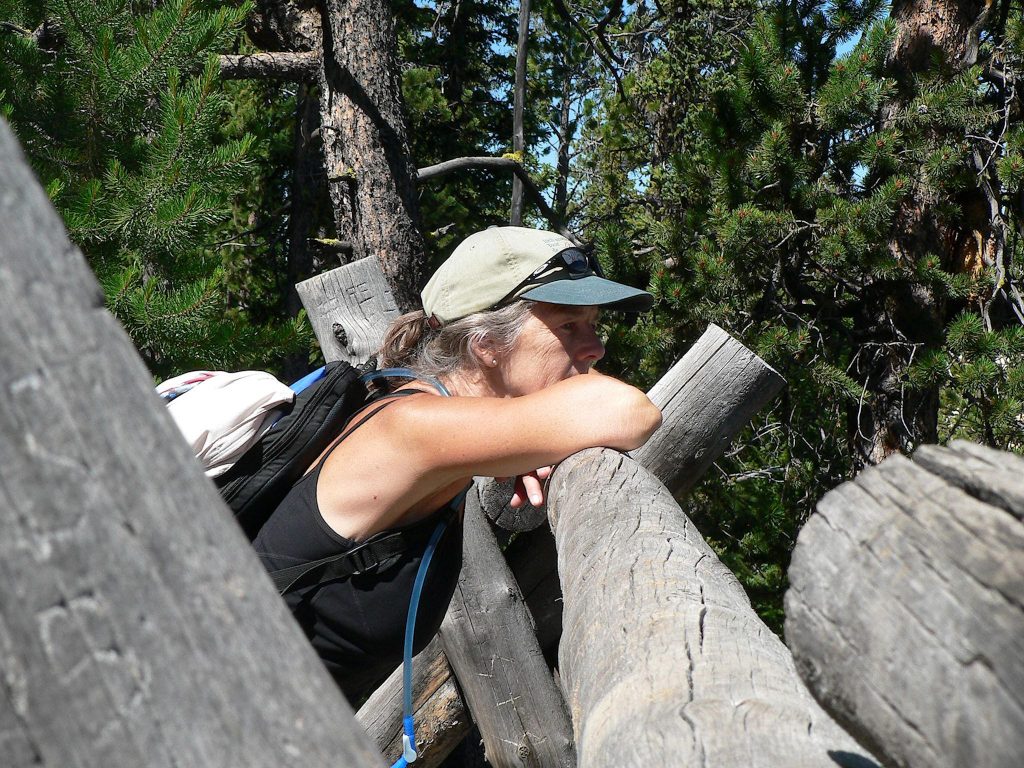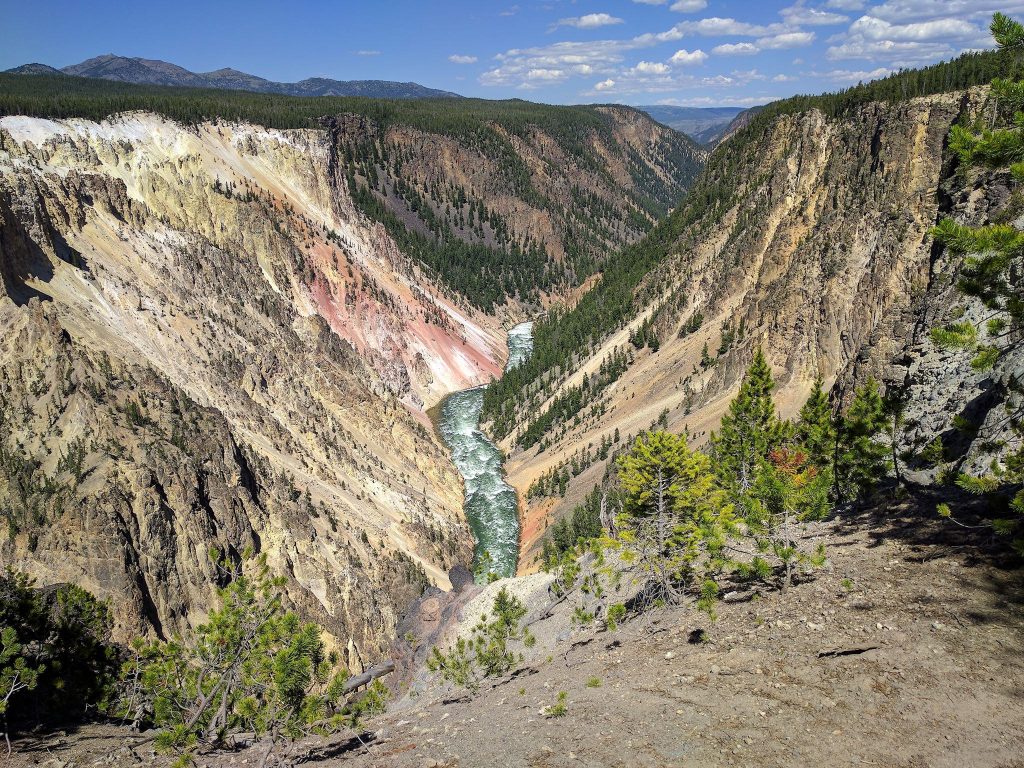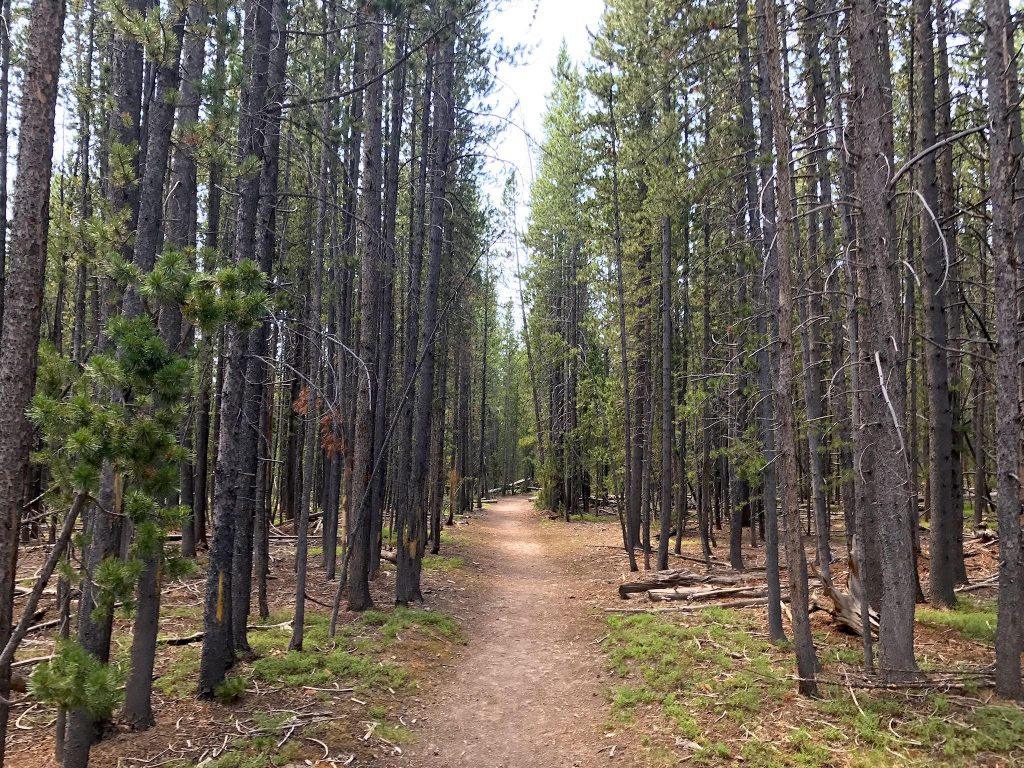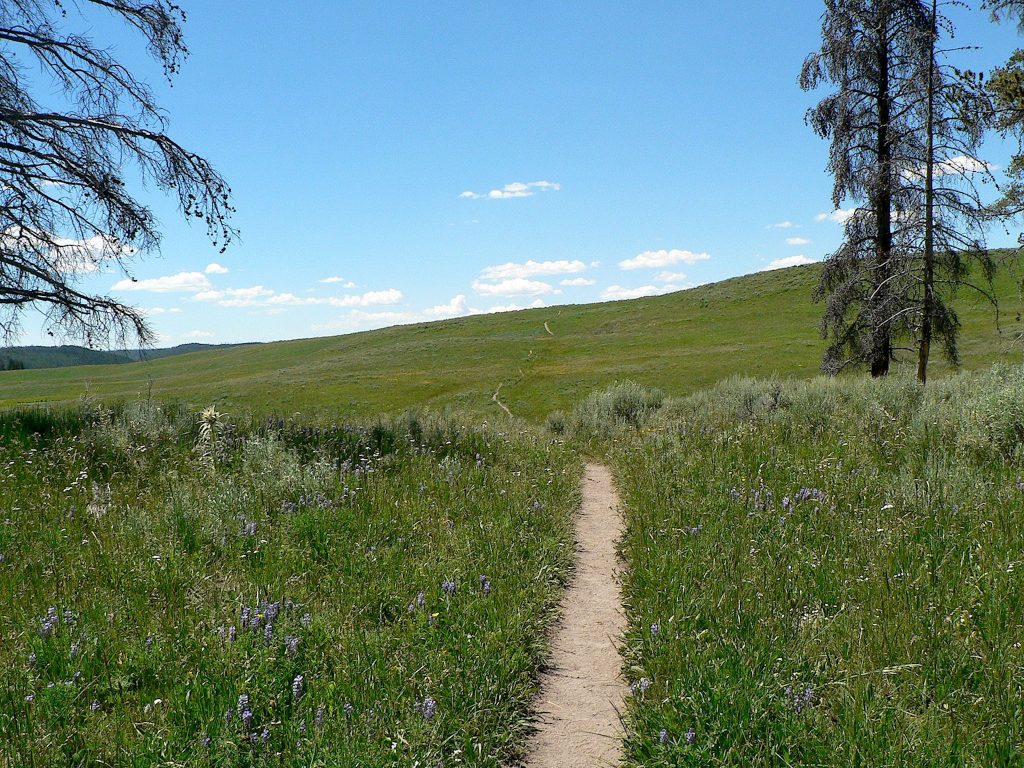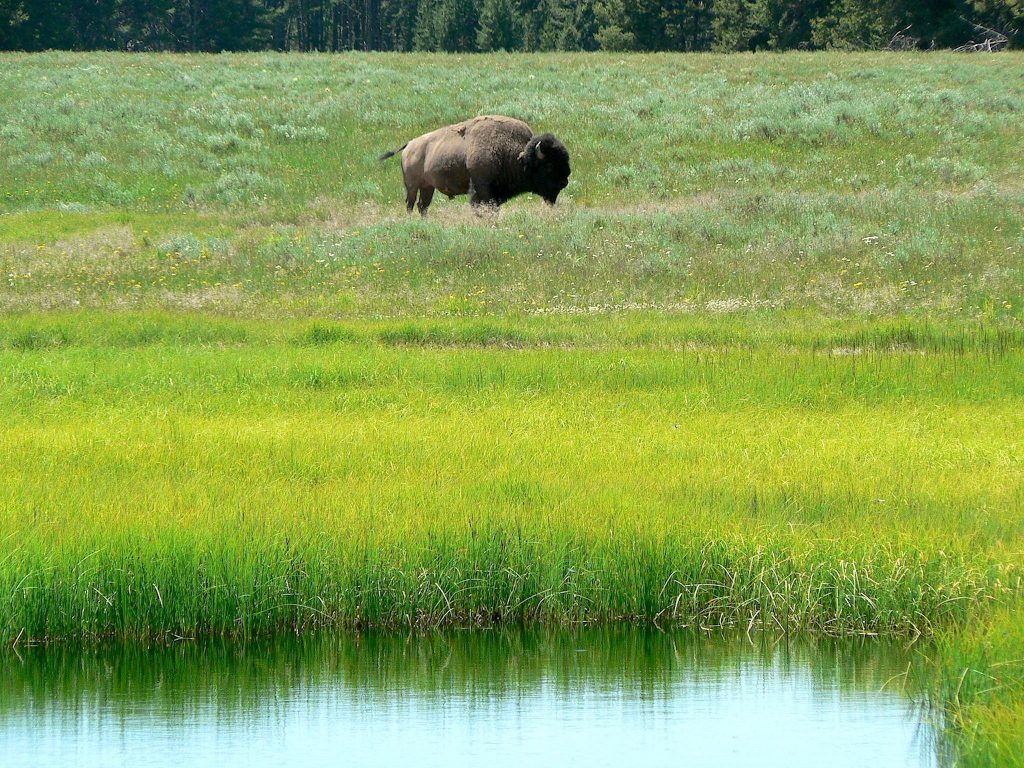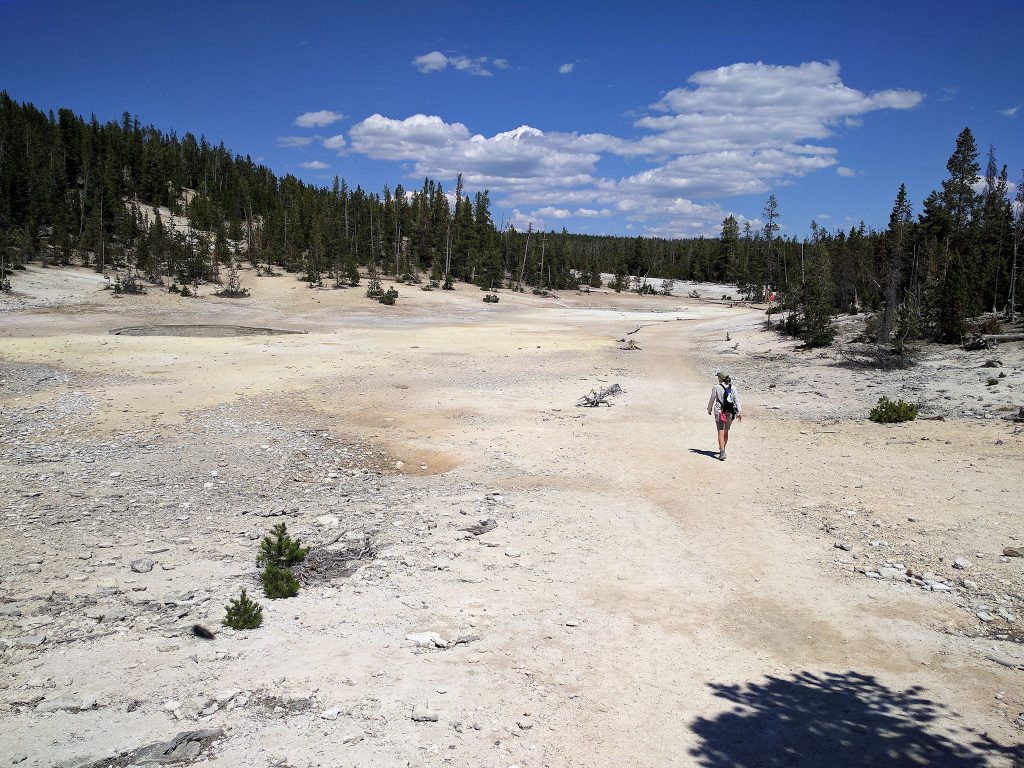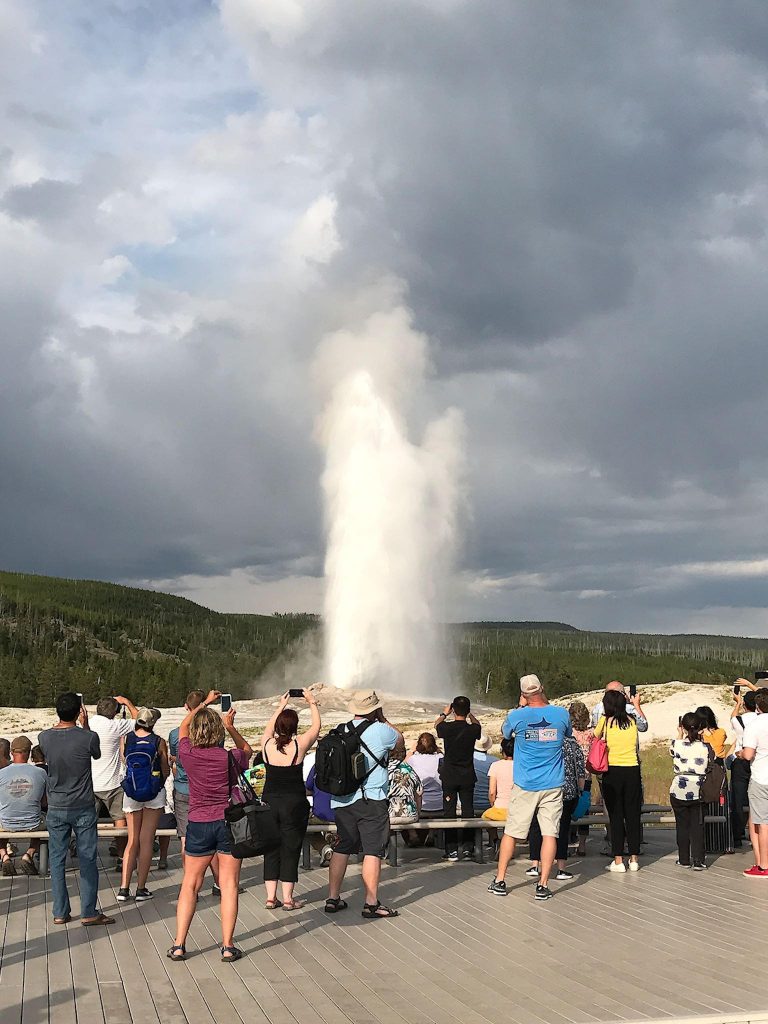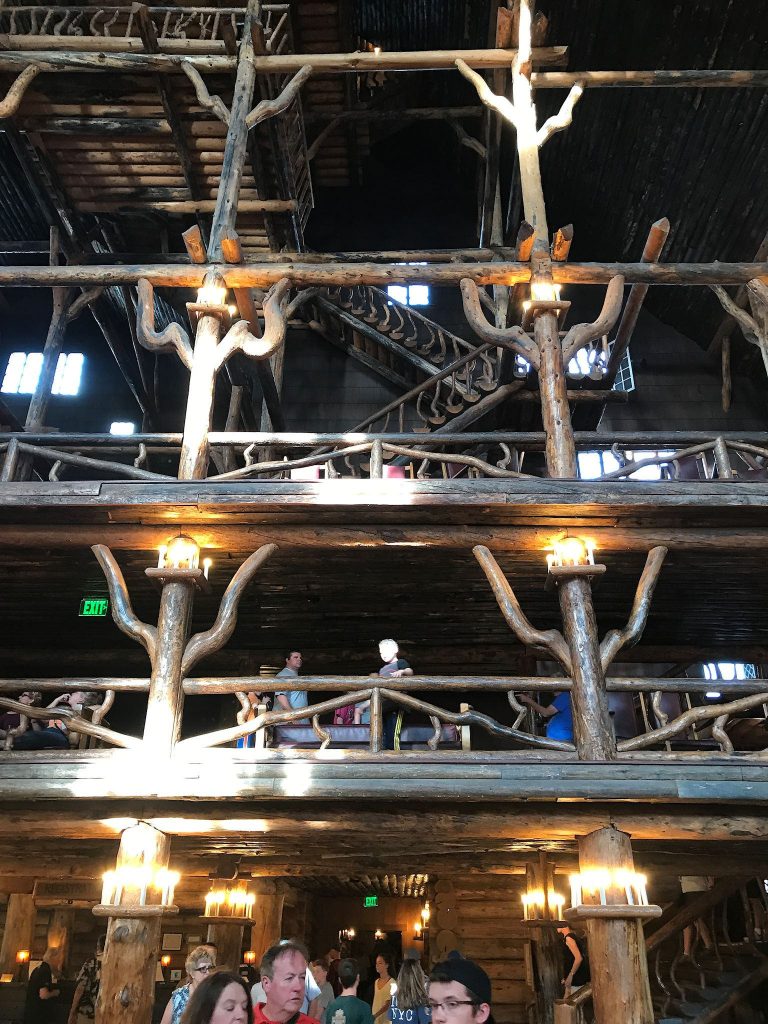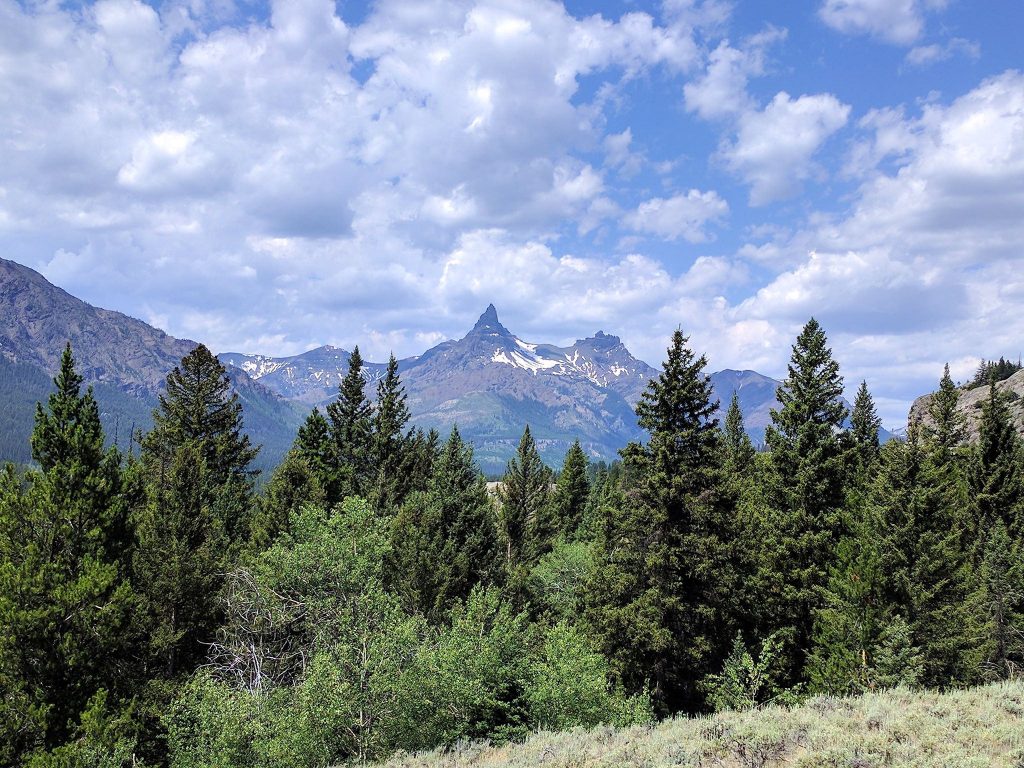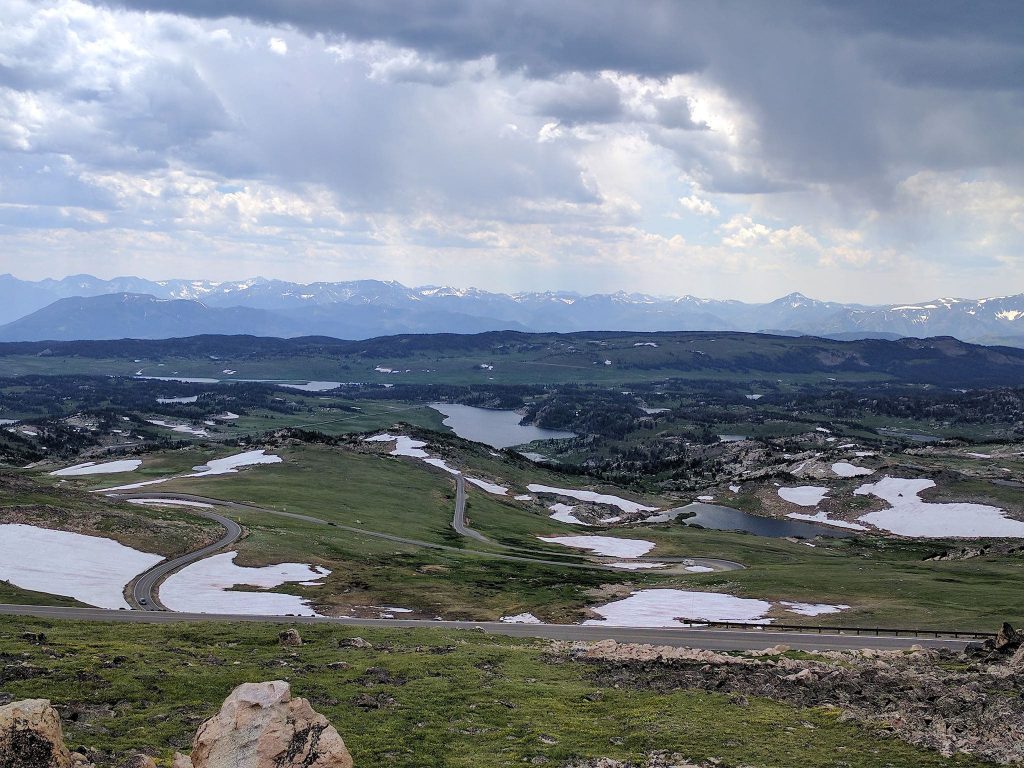The land which comprises Yellowstone National Park is iconic. In 1806, most people dismissed the accounts of its rugged beauty and curious boiling mud and steaming rivers by John Colter, an early explorer and former member of the Lewis and Clark expedition, thinking he was delirious. Given his reputation for exaggeration, Jim Bridger’s 1856 reports of a river flowing past yellow walls were also dismissed. Ultimately, photographs by William Henry Jackson and paintings by Thomas Moran in 1871 created a buzz and were the catalysts for the US Congress to set aside public lands for protection and public pleasure in the 19th century. Yellowstone was subsequently established as the first National Park in 1872. Great lodges, large, elegant and full service (for the day – no internet back then, though desks with letter writing supplies were scattered throughout the common areas) were soon built to attract vacationers from the populated east coast who were increasingly attracted to western adventures made easier by rail travel. Yellowstone is one of the largest National Parks in the US and more than 4 million people visit every year, which this year included these two Vermonters.
We’d both visited Yellowstone in the past – the Madison area by bicycle in the summer in the early 80’s and more recently the Mammoth area by rental SUV in the winter when the park was partially open. This was our first summertime, vehicular visit without a schedule. Time to add some breadth and depth to our Yellowstone experiences…
We set up a home base at Norris Campground, in one of the less fully developed areas in the park and one which we had not yet explored, also within a mile of the Grand Loop Road which is arguably the center of Yellowstone activities. As we waited for our campsite on the first morning, we were greeted at the campground entrance by a bison making his morning rounds. Hi!
We easily entertained ourselves for our first two days with the hiking trails, museums (Norris Geyser and NP Rangers) and ranger talks all walking distance from camp. We hiked (boardwalked?) the muddy caldrons, acidic geysers and deep, clear colorful hot springs of Norris Geyser Basin. This we did twice – the differences in the views of the basin between warm, late afternoon and cool, early morning were like, well, night and day.
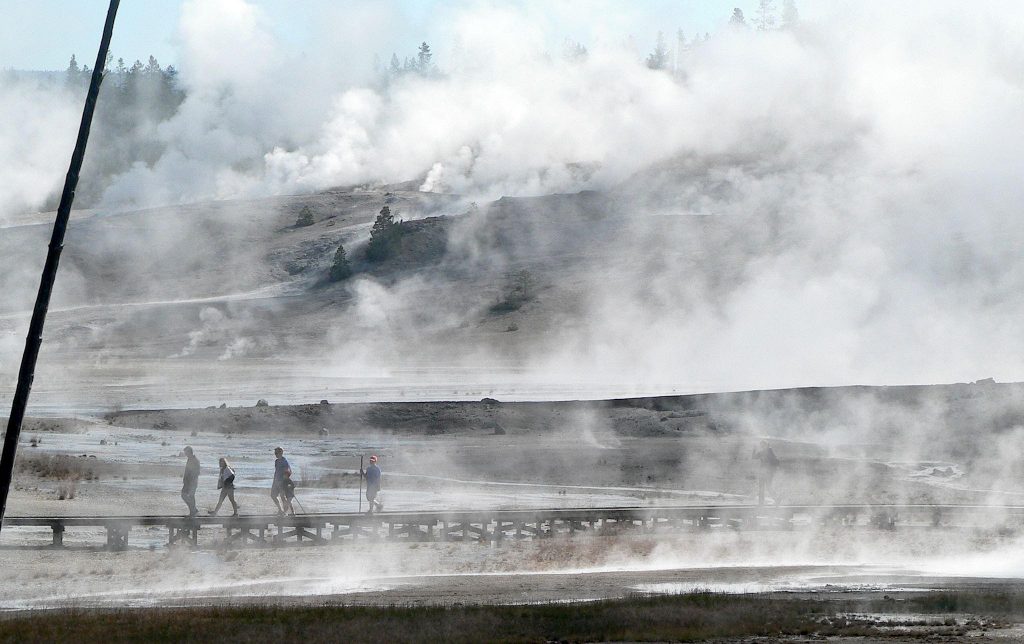
Our initial foray from home base was to Canyon Village to see the Grand Canyon of the Yellowstone and to sample some of this area’s backcountry trails. We started with the (relatively) less traveled South Rim Trail, where the early morning sun provided interesting shadows and ever-changing light and colors on the already colorful canyon walls. Once you’ve seen the stunning 1,000 feet deep golden walls of the Grand Canyon of the Yellowstone, there’s no question where Yellowstone got its name.
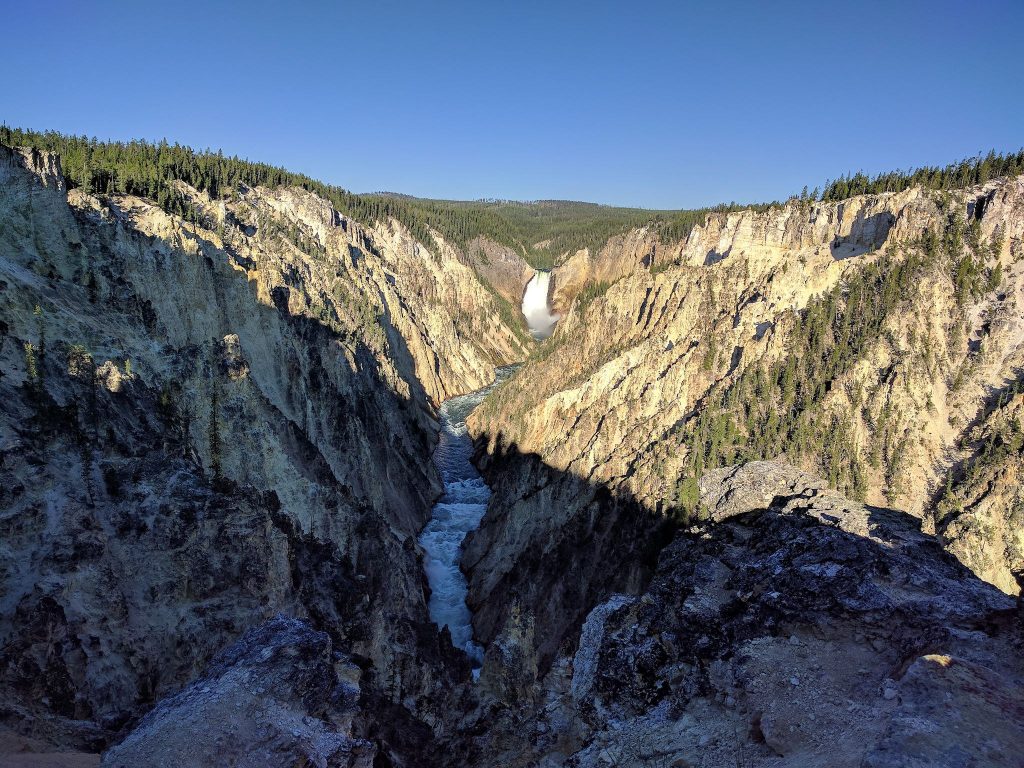
A short connecting trail took us to the Lakes Loop Trail, where we traveled through a mature lodge pole pine forest past Lilly Pad and Ribbon Lakes and 2 smaller, unnamed ponds. As the trail progressed through a broad open meadow, we passed yet another unnamed lake which we unofficially named Two Bison Pond, based on the 2 huge creatures sunning themselves near the trail. The trail continued up a grassy, meadowy knoll past more bison and long views to Clear Lake. We crested a hill, turned a corner and heard a growling sound… No worries, just a mud pot slowly spewing gray-brown bubbles into the air. The trail continued across several other geothermal features before connecting us back to the rim trail, where we witnessed what the late afternoon sun would do to the shadows and colors in the canyon.
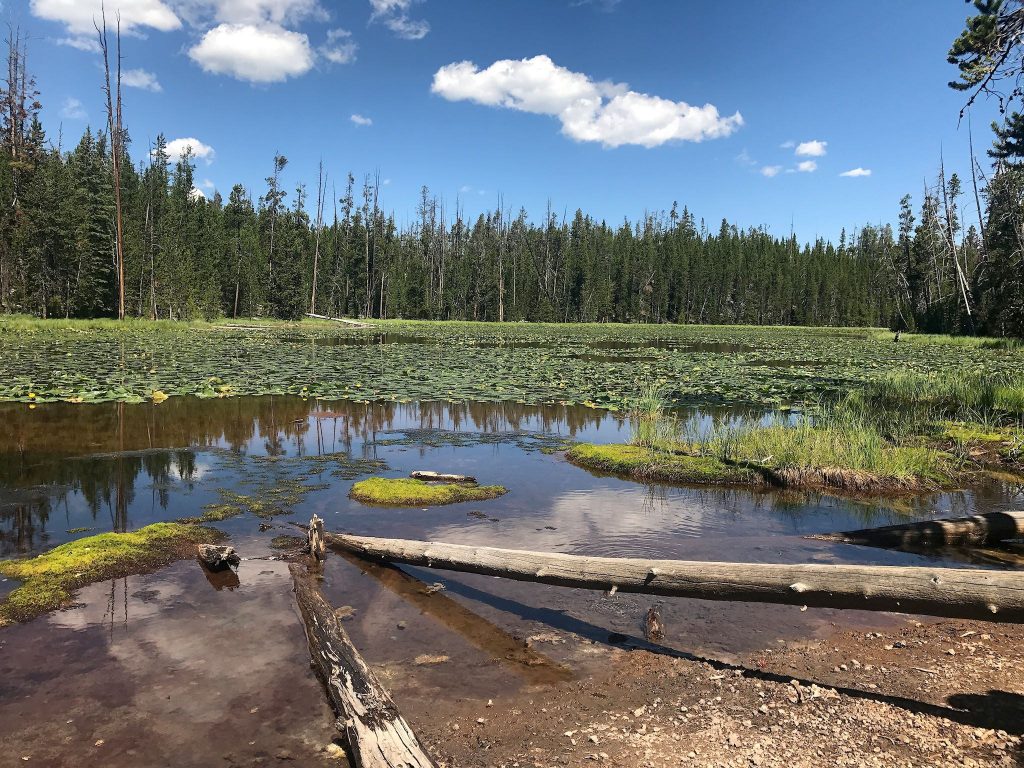
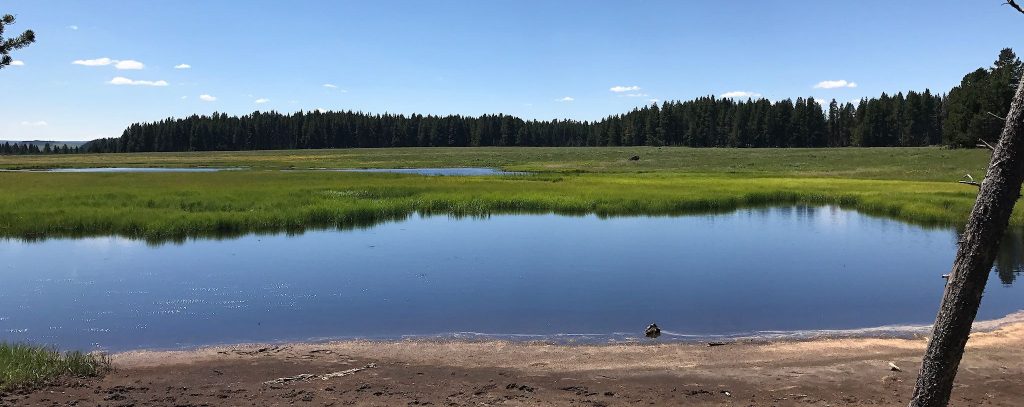
In need of a rest day, we headed out to drive the Grand Loop Road. We didn’t get far before joining the tail end of a long line of stopped traffic, backed up as far as we could see. Bison jam! Hundreds of them apparently seeking greener grass on the other side of the road. We eventually made it to Yellowstone Lake, the largest lake in the world above 7,000 feet. There we leisurely poked around Fishing Bridge, Lake, Bridge Bay and Grant Villages, each offering lodges from different historical eras, gift shops and Visitor Centers filled with informative exhibits, all relatively – and surprisingly – uncrowded. In Grant Village, the film and exhibit on the massive 1988 forest fire at Yellowstone and implications 30 years later were exceptional. No less impressive were the elk hanging around the post office and ranger station. West Thumb offered another boardwalk tour of geothermal features, these right alongside (and in some cases spewing into) the big lake. The last leg of the loop took us past Old Faithful. Although it was fun to see the tall, iconic geyser in action, we had at least as much fun exploring the oldest and most architecturally historic of the grand old lodges – the Old Faithful Inn, built in 1904. We got back to home base having thoroughly enjoyed our 12-hour day and nearly 100-mile drive – and in desperate need of a rest day.
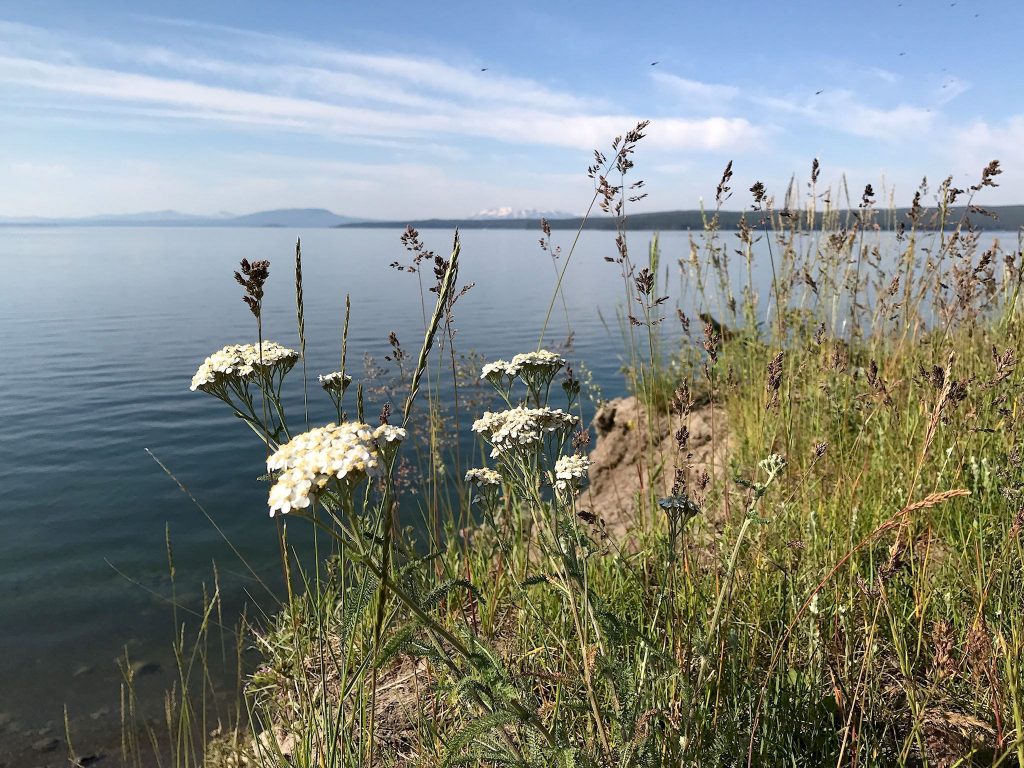
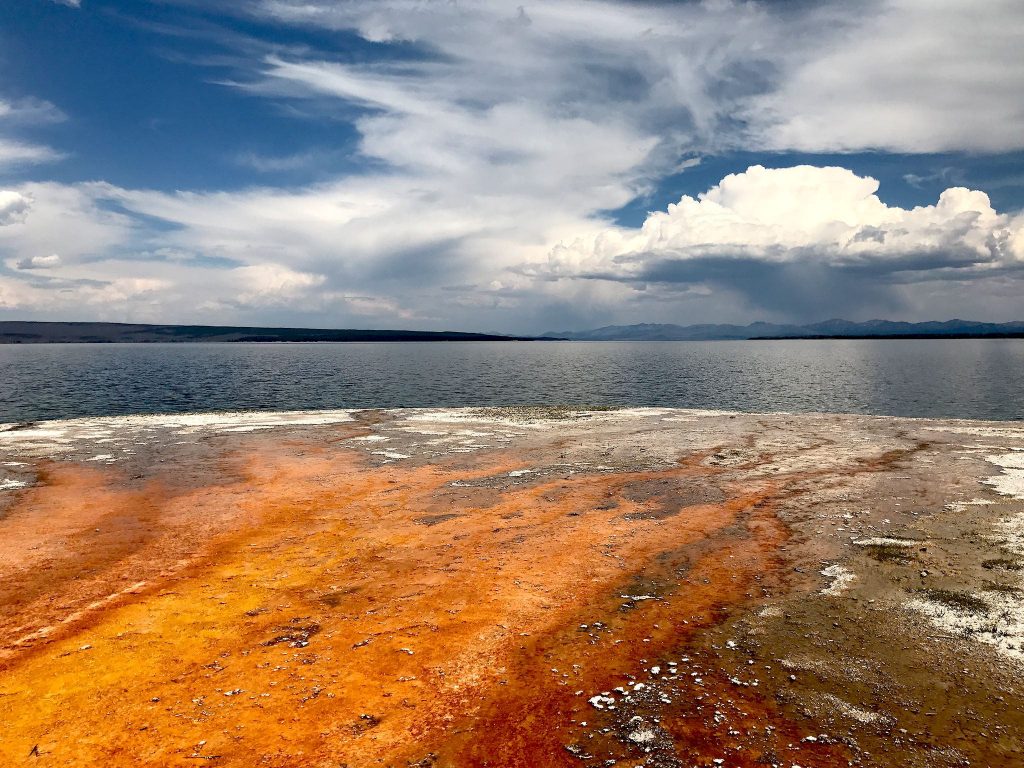
Fortunately, the whole next day it rained. Nap time!
We had planned to leave Yellowstone via the northeast entrance allowing us to sneak in another part of the park we’d not yet visited. The drive up Dunraven Pass alongside the 10,243 foot Mount Washburn reminded us that there are still trails we need to hike on a future visit. The Lamar Valley is breathtakingly beautiful, with its huge, wide, green meadows along the Lamar River. At any time, we could see bison in the grasses, along the river, swimming the river, coexisting with the fishermen along bank. Bison are enormous, dark in color and easy to spot. We’re certain there must have been a few wolves and grizzlies who secretly spotted us, though they remained unseen on this trip.
*SIGH* Yellowstone was behind us. However, within 20 miles, we realized we had made an egregious error. We thought Beartooth Highway was simply the road out of Yellowstone. Ha! It’s a 69-mile adventure tour from the Yellowstone exit, over the 10,947-foot Beartooth Pass, and on into Montana. We weren’t prepared for the massive views over the Beartooth plateau, 12,000-foot peaks, snowfields and glaciers, and secret, cold, clear glacial lakes tucked into basins – nor the 800 switchbacks and endless squeals. Like icing on the Yellowstone cake!
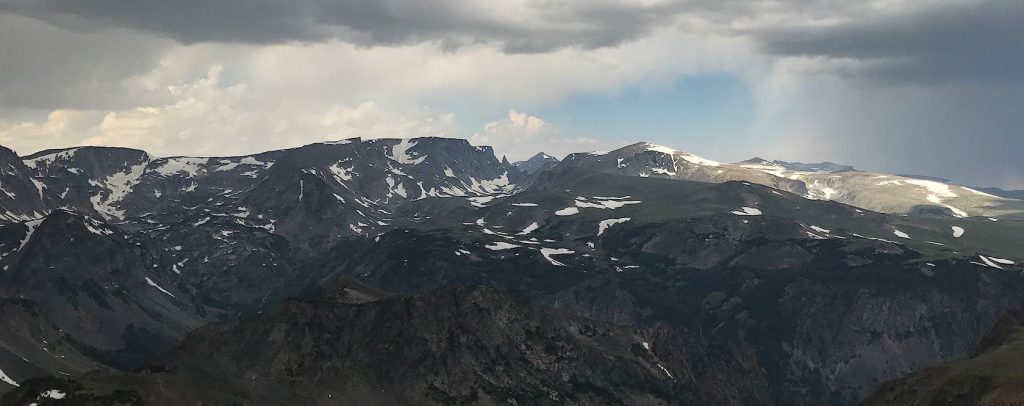
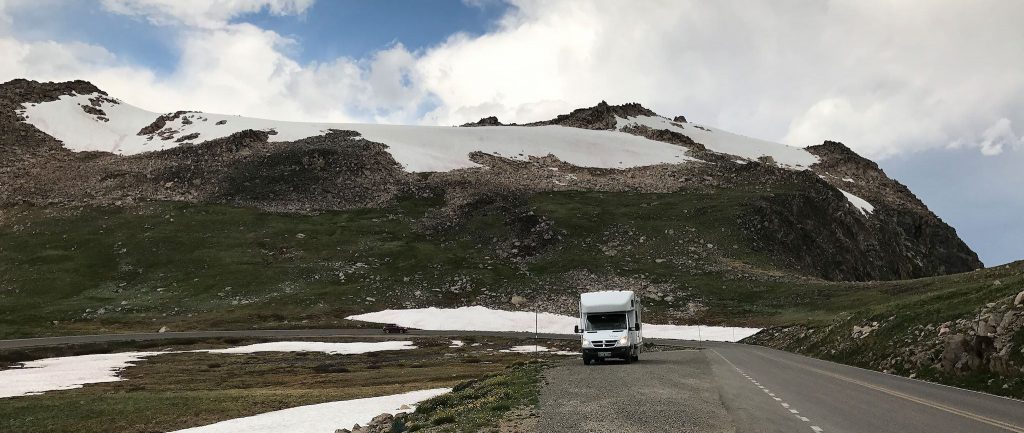
People have asked about the crowds at Yellowstone. Yes, it’s busy. Consider, though, that it’s 100% occupied (lodges and campgrounds) from mid-May through mid-September. There are a few daytrippers, however there are no major metropolitan centers nearby (sorry, Bozeman) to provide huge numbers of them. Any other time of year, it’s less crowded. And snowing. And roads can be closed. So here’s the secret: Zag where others Zig. Most of the people are visiting the sites (and seeing the sights) between 10am and 3pm. Head out early in the morning or late in the afternoon. The NPS has a great emphasis on making sites accessible to all and many shorter trails are paved or nearly so. Most people prefer these trails. Go beyond them if you can and you’ll find quiet trails and fantastic views.
There’s so much to see in Yellowstone! You can bet we’ll be back for more.
For those who are interested, more Norris Camp, Norris Geyser Basin, Lakes Loop hike, Grand Canyon of the Yellowstone, Yellowstone Lake, Geysers, Northeast Yellowstone and Beartooth Highway pix…

